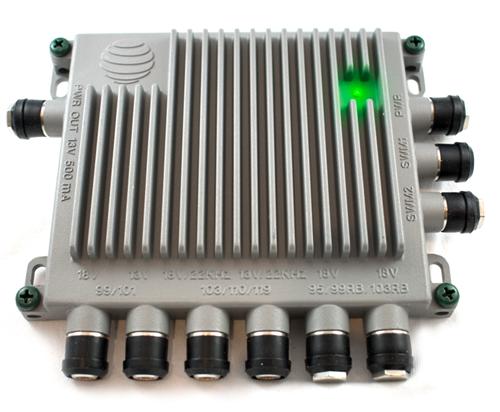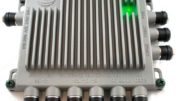DIYers have always been the backbone of Solid Signal’s customer base. A DIYer started Solid Signal and for years it was the only place to get commercial-quality parts so you could upgrade things yourself. Recently some DIYers have come to us with frustration about the SWM-30 multiswitch. They’ve said that this part is more limited than the SWM-8 and SWM-16 that it replaces, and that it’s not good for DIY use. I don’t agree, but I understand the frustration. For the benefit of all those DIYers out there, let’s run down the facts.
SWM-30 details
SWM-30 was designed as a replacement for all previous SWM multiswitches, including the SWM-8, SWM-16, and SWM-32. It combines the small size and low power consumption of a SWM-8 with the tuner capacity of a SWM-32.
The original goal of a SWM-30 was to provide six apartments with HR44 Genie DVRs. Its 30 tuner-capacity is perfect for that purpose. It was never intended for home use.
Instead, the Reverse Band 3 LNB is recommended for almost all residential installs. This LNB provides SD, HD, and 4K service over a single line to 13 tuners (with a maximum of 21 depending on how the system is wired.) However, if 13 tuners doesn’t do it for you as a DIYer, you should know about the difference between the SWM-30 and prior multiswitches.
SWM-30 is locked to 26 tuners unless you’re 100% Genie
One of the lesser known facts about Genies is that they contain more advanced SWM hardware than prior receivers like the H25. The H25, HR24 and earlier SWM equipment can only use tuners 1-13 out of each bank of the SWM-30. This isn’t a limitation of the SWM, it’s because the older tech doesn’t support tuners 14 and 15. Only Genie devices do that. In order to get 15 tuners out of a single output from a SWM-30, you would have to use three HR44s. The HR54 uses 7 tuners so you can get 14 tuners from each bank if you have two.
If there were a new receiver based on the new SWM chips, you could theoretically put 15 of them on each output of a SWM-30, but that receiver doesn’t exist.
SWM-30 doesn’t have a crossover for whole-home
Both the SWM-8 and SWM-16 multiswitches have an internal crossover that lets receivers on one output share programming with receivers on the other output. SWM-32 multiswitches have not had this crossover. For those who are replacing a SWM-16 with a SWM-30, this may mean some rewiring.
Again this was an intentional choice based on the limitations of older hardware. The older MoCA 1.1 devices (essentially anything other than Genie 2 and C61) have a limit of 15 devices that can see each other. This includes all receivers and DVRs. It’s very easy to see how that limit would be exceeded if the two outputs crossed over.
AT&T’s whole-home system tends to get weird in general with as few as 6 DVRs sharing the same network, so even if you have more than that it might make sense to break them up into two separate groups.
Does this mean you should avoid the SWM-30?
There are always going to be those cases where you are better off staying with a SWM-8 or SWM-16. That’s why we still sell them, along with the even older WB68. We want to support our DIYers and give you a choice. However in most cases you are still going to be better off with a SWM-30. It is smaller than almost any other switch, uses less power, has better heat dissipation and is overall more modern.





